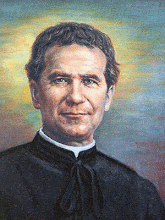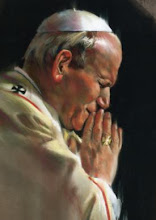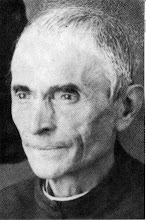To understand the theological underpinnings of Pope Francis’s vision and agenda for the Catholic Church, you should study his papal documents and read his speeches. But to appreciate his mission in action, you should check him out on YouTube. There you will find videos featuring some of his most powerful moments — his encounters with people on the margins of society: prisoners, refugees, the poor, the homeless, and, most of all, people with disabilities.
In a video from last Easter Sunday, Francis is seen touring St. Peter’s Square at the Vatican in his popemobile. At one point his attention is directed to the front row of the throng of pilgrims. Suddenly an usher lifts up a small boy who appears to have a physical disability.
Francis takes the boy into his arms, kisses him, and whispers something into his ear. The boy — eight-year-old Dominic Gondreau, an American, who has cerebral palsy — looks positively enraptured.
The scene lasted no more than 15 seconds, but video and photographs of the encounter quickly went viral. A photo of the embrace got top billing on the Drudge Report and was published in the New York Post, Wall Street Journal,Philadelphia Inquirer, and Le Figaro. Fox News, NBC News, ABC News, and CNN all showed clips and aired follow-up interviews with Dominic and his family.
Something similar happened one morning last November during the pope’s weekly general audience in Saint Peter’s. Photos from that day show Francis embracing Vinicio Riva, an Italian man with neurofibromatosis type 1, a genetic condition affecting cell growth of neural tissues, which has left him covered with severe tumors, swelling, and itchy sores. One can imagine many people being repulsed by Riva’s condition, but it seemed to draw Pope Francis.
“He came down from the altar to see the sick people,” the 53-year-old Riva later told reporters. “He embraced me without saying a word. I felt as though my heart was leaving my body.” Riva described the hug as “like paradise. My head was against his chest, his arms were wrapped around me. It lasted just over a minute, but to me it seemed like an eternity.”
Riva’s moment with Francis also went viral. Photos were shown on local, national, and international news broadcasts, posted on Facebook, and tweeted thousands of times. The event was picked up by publications as diverse as People magazine, theDaily Mail, and the Italian magazine Panorama. CNN later broadcast a profile of Riva, and Time magazine ranked the encounter as its second-most heartwarming story of 2013.
Dominic Gondreau and Vinicio Riva aren’t the only people with disabilities whose interactions with Pope Francis have made headlines and melted hearts. There was the striking image of Francis on his knees washing the feet of twelve elderly and disabled people on the Thursday before Easter; there was the touching video of the pope inviting a teenage boy with Down syndrome up to check out the popemobile; and a recent video shows Francis stopping his car to embrace and bless a young woman on a stretcher who was waiting by the side of the road with her family.
Since taking over as leader of the world’s 1.2 billion Catholics, Pope Francis has made it an important part of his mission to combat what he calls “the ‘throw away’ culture,” according to which everything can be discarded. He has called on all people of goodwill to engage in “a culture of encounter, solidarity, and hospitality” with people on the margins of society, including people with disabilities. This proposal of his could not have been more timely.
The first indication that Pope Francis intended to make solidarity with the marginalized a major theme of his papacy was the name he chose for himself, in honor of Saint Francis of Assisi. One of history’s most venerated religious figures, Saint Francis was born into moderate wealth and lived a life of some extravagance until a gradual spiritual conversion led him to embrace monastic poverty and simplicity. He came to believe that the only way to truly love the poor, sick, and oppressed was to become one of them.
“As Francis showed mercy to these outcasts, he came to experience God’s own gift of mercy to himself,” the Dominican historian Augustine Thompson writes. “As he cleaned the lepers’ bodies, dressed their wounds, and treated them as human beings, not as refuse to be fled from in horror, his perceptions changed. . . . Francis’s aesthetic sense, so central to his personality, had been transformed, even inverted. The startled veteran sensed himself, by God’s grace and no power of his own, remade into a different man.”



















No comments:
Post a Comment